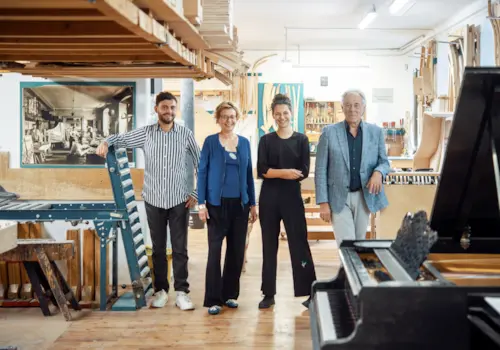22 May 2013
|
We speak to Valentina Lisitsa on YouTube fame, her love of the Rachmaninov piano concertos and her own very special tips on technique.
Within her three-page interview for Pianist magazine, which appears inside issue 72, Valentina Lisitsa offers up her 'Up Close' answers...
If there were only one composer in the world you could play, who would it be?
Liszt – but that’s cheating, an unfair answer to an unfair question. I say Liszt because I would get to ‘own’ all the Beethoven symphonies and more, 60+ Schubert Lieder, the miscellany of Bach, Mozart, and so on. If the question is purely ‘original’ works, no transcriptions – then Beethoven.
If there were only one pianist (dead or alive) you hear, who would it be?
Wilhelm Backhaus.
If there were only one concert hall in the world you could play in, which would it be?
Musikverein. By a big margin. I love the acoustics, the audience, the history.
If you’ve had to struggle with any technical difficulties, what are they?
So-called ‘technique’ is nothing but physiological function, something that the body does – very much like being able to walk. I never pay attention to purely ‘technical’ problems – they are always part of musical (interpretational) problem, and the solution lays in solving music question first and foremost.
If you could give advice to an amateur pianist, what would it be?
Learn and play your left-hand part as if it were a separate piece of music with a life of its own (reverse the advice for ‘lefties’, naturally). Make sure you are able to play your piece with no pedal – relying on pedal to connect the notes and to obscure the deficiencies with a veil of pedal ‘smoke’ are the most common mistakes. Don’t just memorise the notes. Make a story – no matter how silly or nonsense, the more surreal the better. Memorising notes as one memorises a speech in a foreign language is bound to lead to memory lapses. YouTube is an invaluable tool; you can get to study your repertory with the best pianists of all times. Use it. If you are learning a piece, don’t hesitate to put your headphones on and just play along with your favourite recording. No matter how many times you hear the playing you will not grasp all the finer points if not directly measuring your inner hearing of music with an interpretation you like. One example I give – which is accessible to anybody including the very beginners – is the YouTube video of the second movement of Beethoven’s Piano Concerto No 4 (the most sublime piece of music written with the least amount of notes) performed by Backhaus. There are but few short and slow phrases the piano gets to play here – yet it is an encyclopaedia of phrasing, shading, using time to create expressiveness.
Read the full interview inside Pianist 72.







